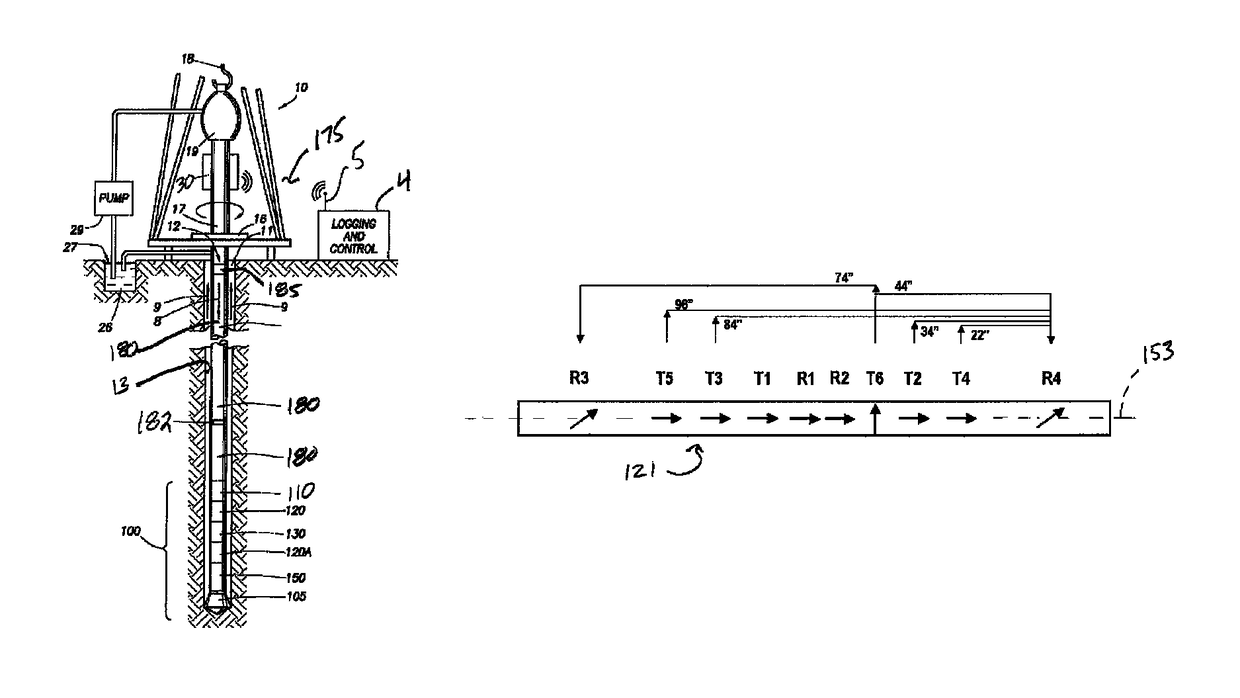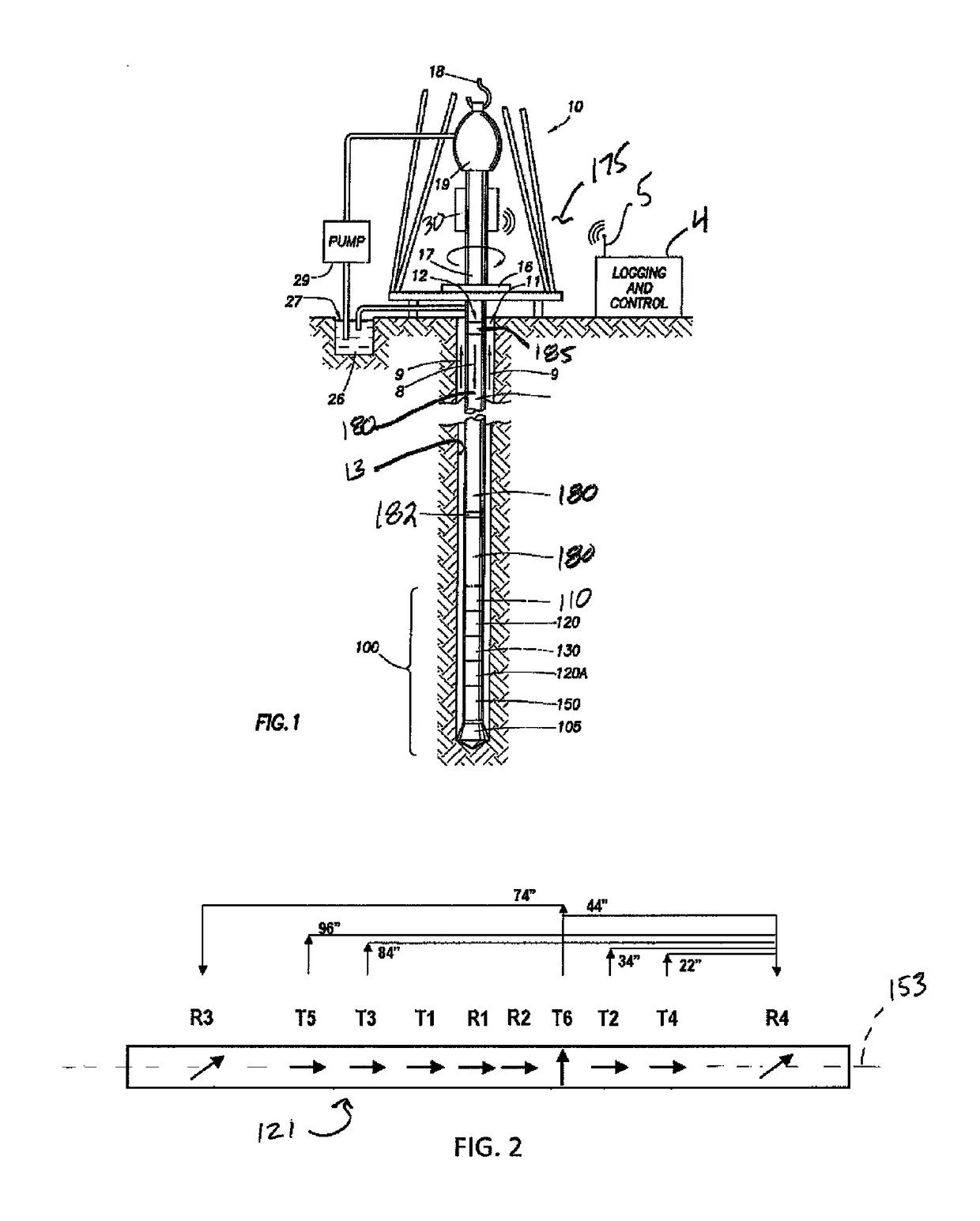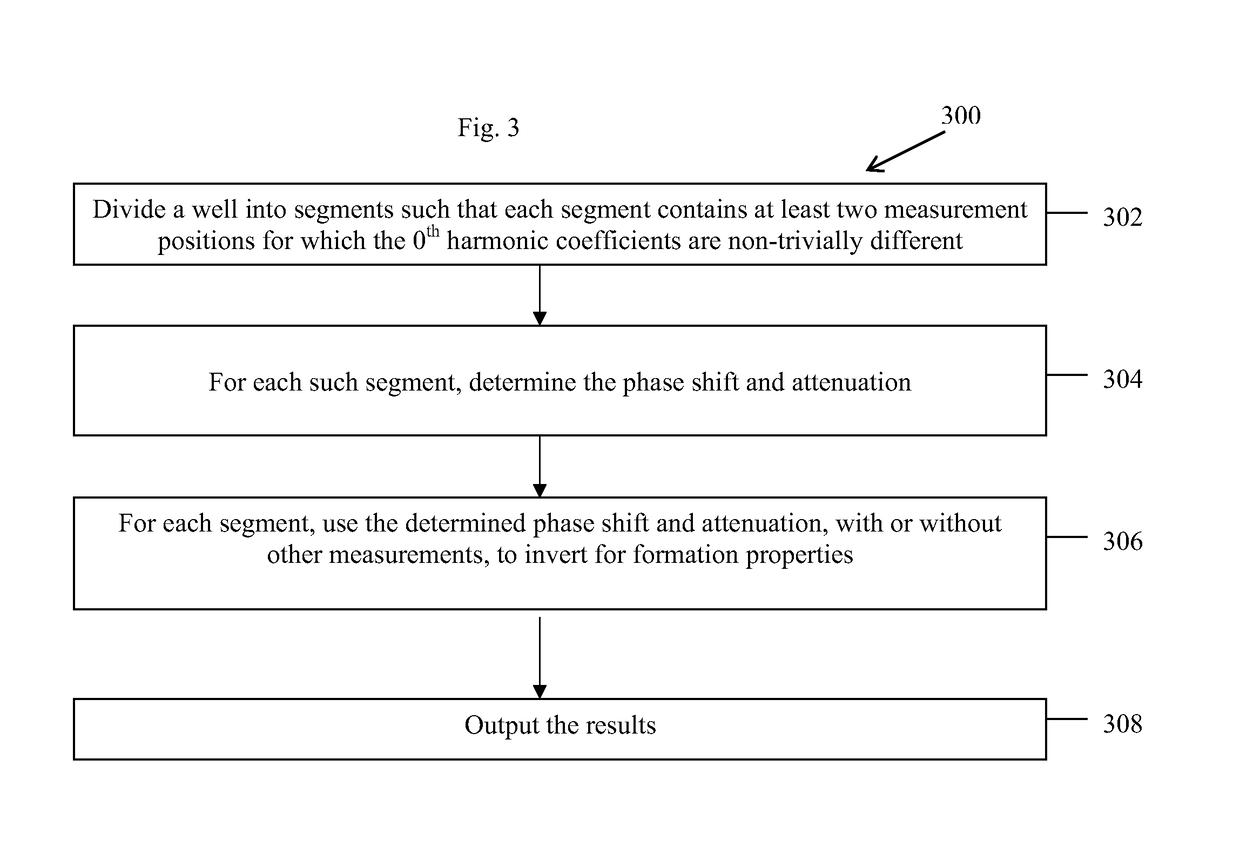Determining resistivity anisotropy and formation structure for vertical wellbore sections
a technology of resistivity anisotropy and formation structure, applied in the field of oil and gas well logging, can solve the problems of slowing down the rate of data acquisition, and reducing the accuracy of time-delay errors
- Summary
- Abstract
- Description
- Claims
- Application Information
AI Technical Summary
Problems solved by technology
Method used
Image
Examples
Embodiment Construction
[0027]FIG. 1 illustrates a wellsite system. The wellsite can be onshore or offshore. In this exemplary system, a wellbore 11 is formed in subsurface formations by rotary drilling in a manner that is well known. Directional drilling can also be performed.
[0028]A drill string 12 is suspended within wellbore 11 and has a bottom hole assembly (BHA) 100 that includes a drill bit 105 at its lower end. The surface system includes platform and derrick assembly 10 positioned over the wellbore 11 and the assembly 10 includes a rotary table 16, kelly 17, hook 18, and rotary swivel 19. The drill string 12 is rotated by the rotary table 16, energized by means not shown, that engages the kelly 17 at the upper end of the drill string 12. The drill string 12 is suspended from hook 18, attached to a traveling block (also not shown), and the rotary swivel 19 permits rotation of the drill string 12 relative to the hook. As is well known, a top drive system could alternatively be used.
[0029]The surface...
PUM
 Login to View More
Login to View More Abstract
Description
Claims
Application Information
 Login to View More
Login to View More - R&D
- Intellectual Property
- Life Sciences
- Materials
- Tech Scout
- Unparalleled Data Quality
- Higher Quality Content
- 60% Fewer Hallucinations
Browse by: Latest US Patents, China's latest patents, Technical Efficacy Thesaurus, Application Domain, Technology Topic, Popular Technical Reports.
© 2025 PatSnap. All rights reserved.Legal|Privacy policy|Modern Slavery Act Transparency Statement|Sitemap|About US| Contact US: help@patsnap.com



